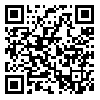BibTeX | RIS | EndNote | Medlars | ProCite | Reference Manager | RefWorks
Send citation to:
URL: http://hakim.tums.ac.ir/article-1-2333-en.html
2- Department of public Law, May.C, Islamic Azad University, Maybod, Iran. ,
3- Associate Professor, Department of Medical Ethics, School of Medicine, Iran University of Medical Sciences, Tehran, Iran.
Introduction: Health permits serve as crucial regulatory and policy tools in health system stewardship, essential for quality assurance and safety of services and goods. This study aimed to analyze the dispersed legal framework governing these permits and identify challenges arising from this dispersion.
Methods: This library-based study was conducted through direct review of legislative texts enacted from 1906 onwards. Data were extracted from authoritative sources including the Official Gazette, National Laws Portal, and Parliament Research Center website, and validated according to the "Law on Invalid Health Regulations" (2019) and the "Health Code Bill" (2023). The research process included identification, validation, categorization, and analysis of valid regulations. To identify permits categorized under the health domain, a composite method combining deductive and inductive approaches was employed.
Results: Among approximately 12,500 enacted laws, 22 valid health permits were identified and classified into three main categories: "medical and paramedical practice licenses" (5 cases, 23%), "establishment and operation permits for medical institutions" (5 cases, 23%), and "health product-related permits" (12 cases, 54%). The findings revealed significant dispersion of these regulations across 16 different laws.
Conclusion: Regulatory dispersion and inflation represent the main challenges in Iran's health permit system, leading to process complexity, parallel oversight mechanisms, and ineffective stewardship implementation. The integration and development of a "Iran's Health Code" along with establishing a unified electronic system are proposed as fundamental solutions to address these challenges.
Received: 2025/11/19 | Accepted: 2023/12/21 | Published: 2023/12/21
| Rights and permissions | |
 |
This work is licensed under a Creative Commons Attribution-NonCommercial 4.0 International License. |





